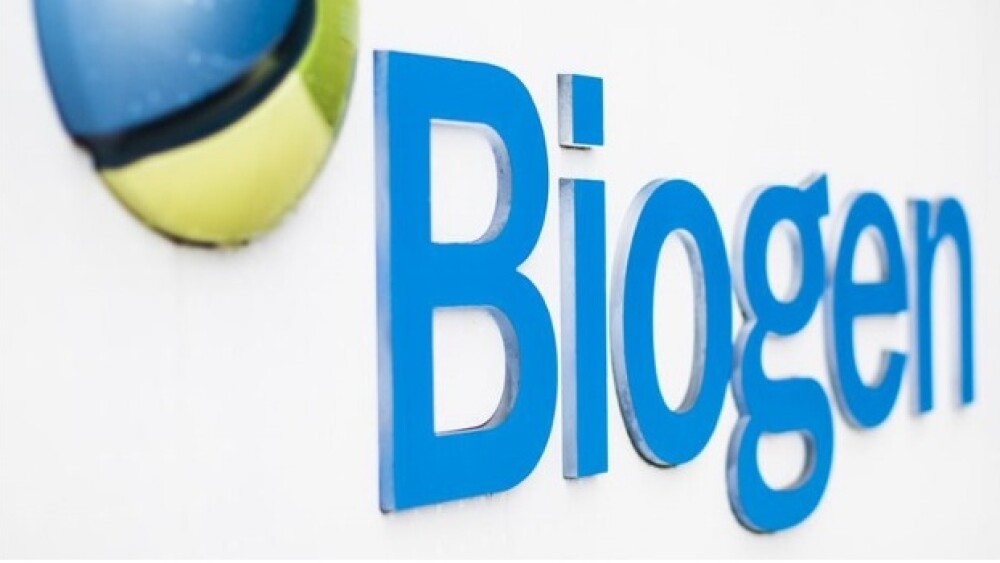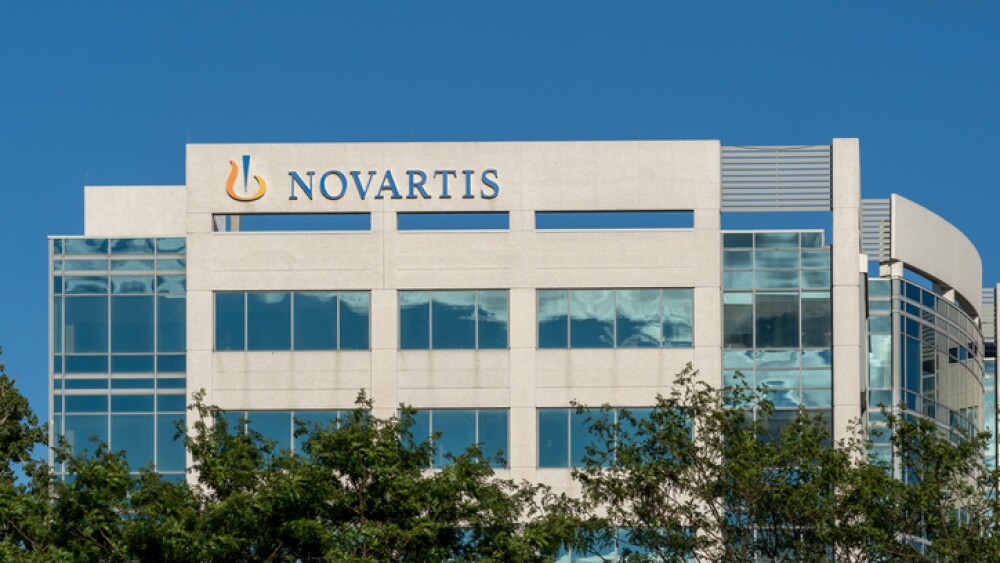One of the big drugs investors, analysts and pretty much everyone else in the biopharma industry is keeping an eye on is Biogen and Eisai’s aducanumab for Alzheimer’s disease.
Photo courtesy of Biogen.
One of the big drugs investors, analysts and pretty much everyone else in the biopharma industry is keeping an eye on is Biogen and Eisai’s aducanumab for Alzheimer’s disease. If approved, it will be the first disease-modifying treatments to be approved since 2003 (AbbVie’s Namenda (memantine))—and the existing drugs have modest effects, at best.
But aducanumab has had a long and peculiar history, and the pending approval—or rejection—is faced by significant skepticism as well as significant cheerleading. And part of the problem is that most of the cheerleaders appear to be Alzheimer’s patients, their families, advocates, Biogen and Eisai, and a few people within the U.S. Food and Drug Administration (FDA).
The skeptics include many physicians, other drugmakers developing Alzheimer’s medications, and, rather ominously for the drug’s approval, most of the FDA’s Peripheral and Central Nervous System Drugs Advisory Committee that reviewed the drug.
If it should be approved, analysts have projected annual sales of about $4.8 billion by 2026. It is also projected to have, if approved, a price tag of about $50,000 per year, per patient. Let’s take a look.
How Does Aducanumab Work?
Alzheimer’s disease appears to be the result of the accumulation in the brain of two abnormal proteins, beta amyloid and tau. Much of the attention has been on beta amyloid and the so-called Amyloid Theory.
Amyloid plaques typically appear earlier in the disease, whereas tau tangles tend to appear later in the disease. The Amyloid Theory largely states that if you were able to prevent the accumulation of beta amyloid, or clear existing amyloid, the progress of the cognitive and memory problems associated with Alzheimer’s would be slowed or prevented.
Unfortunately, drug after drug that was designed to eliminate or prevent amyloid accumulation failed to demonstrate an improvement in cognition and memory in Phase II and III clinical trials, even when there was biomarker and MRI evidence that the amyloid was cleared. At least until a sub-analysis of aducanumab in a Phase III trial. But more on that later.
Aducanumab is a high-affinity, fully human IgG1 monoclonal antibody that targets a conformational epitope found on beta amyloid. It was originally developed by Swiss biotech company Neurimmune from healthy, aged donors with normal cognition. The belief was that their immune systems had successfully resisted Alzheimer’s disease. It is given via infusion.
The original pact between Biogen and Neurimmune was inked in 2007.
A Rollercoaster Ride
Earlier this year, the FDA extended the review period for Biogen and Eisai’s Biologic License Application (BLA) for aducanumab for Alzheimer’s disease. The drug has been fraught with controversy—and unexpected hopes. The decision by the FDA on the drug application was expected on March 7, but is now delayed until June 7, 2021.
In March 2019, Biogen and Tokyo-based Eisai announced they were discontinuing the global Phase III clinical trials, ENGAGE and EMERGE, of aducanumab in patients with mild cognitive impairment for Alzheimer’s and mild Alzheimer’s dementia.
They were also discontinuing the EVOLVE Phase II trial and the long-term extension PRIME Phase Ib trial. An independent data monitoring committee indicated they were unlikely to hit their primary endpoint. It appeared to be the final nail in the coffin for the Amyloid Theory.
But in October 2019, the two companies announced plans to pursue regulatory approval for the drug. It turned out, the Phase III EMERGE trial met its primary endpoint, showing a significant decrease in clinical decline.
Biogen presented the findings in the final data analysis in a December 2019 conference, and although there was still some skepticism about the overall data, it did appear to be enough to file for a BLA and the company planned to do so in the second quarter of 2020.
What they presented was that the Phase III EMERGE trial met its primary endpoint, showing a significant decrease in clinical decline. Biogen said the data from a subset of patients that received a high enough dose of the drug had significant benefits on measures of cognition and function, including memory, orientation, and language, as well as benefits on activities of daily living.
Although many had issues with some of the data, which was very complex, the companies felt they had a strong enough case to submit it to the FDA and were expected to do so in Spring 2020.
Then, in April 2020, they announced that although the company had begun to submit parts of the BLA, they did not expect to complete it until the third quarter of 2020.
The submission was completed in August 2020 with ongoing collaboration with the FDA and include data from the Phase III EMERGE and ENGAGE trials, as well as the Phase Ib PRIME study. Biogen has also requested Priority Review.
In November 2020, the FDA’s Peripheral and Central Nervous System Drugs Advisory Committee slammed the drug submission, voting 1 yes, 8 no and 2 uncertain on the question, “Does Study 302 (EMERGE), viewed independently and without regard for Study 301 (ENGAGE), provide strong evidence that supports the effectiveness of aducanumab for the treatment of Alzheimer’s disease?” It also voted 0 yes, 7 no and 4 uncertain on whether Study 103 (PRIME) supported the effectiveness of the drug. Again and again, the committee voted against the drug.
Apparently the newest delay is related to the FDA requesting additional analyses and clinical data. Biogen complied, and the FDA considered it a Major Amendment to the application, thus requiring additional review time.
If approved, and that seems like a big “if,” the Clarivate analysts describe it as a “monumental opportunity to radically change patient care and transform the market.”
Approval is Not Guaranteed
Andrew E. Budson, Chief of Cognitive & Behavioral Neurology, Associate Chief of Staff for Education and Director of the Center for Translational Cognitive Neuroscience at the Veterans Affairs Boston Healthcare System, Associate Director for Research at the Boston University Alzheimer’s Disease Center, Professor of Neurology at Boston University School of Medicine, and Lecturer in Neurology at Harvard Medical School, wrote a November 2020 article in Harvard Health Publishing, noting that he not only attended the FDA adcom hearing, but independently reviewed all the publicly available data.
He pointed out, “If aducanumab works, it would be the first drug that actually slows down the progression of Alzheimer’s. That means we could possibly turn Alzheimer’s from a fatal disease into one that people could live with for many years, in the same way that people are living with cancer, diabetes, and HIV/AIDS.”
But, as previously mentioned, there’s quite a bit of debate about the drug’s efficacy and safety. Budson noted that patients would need an amyloid PET scan to be certain they had amyloid plaques of Alzheimer’s. Then they would require the drug, which is an intravenous infusion, every four weeks—forever.
In addition, 30% of the people who took the drug had a reversible brain swelling, and more than 10% had tiny brain bleeds. Although manageable, they would require significant monitoring by an expert neurology/radiology team who would know how to deal with these side effects and know when to pause or halt the drug.
On the issue of risk-benefit, the benefit was fairly small. And Budson points out that most Alzheimer’s patients are on Medicare, meaning it’s the taxpayers who will share the costs. And at $50,000 per year per patient, the numbers start to get big—there are more than two million people with Alzheimer’s with mild cognitive impairment and mild dementia, and if only 25% took the drug, the costs for payers would hit $25 billion annually, which would not include the costs of the PET scans and the medical teams who monitor side effects.
Still, a potential argument is that even with moderate efficacy, it’s something for a disease that is only predicted to be more common as the population ages, and for which current therapies are largely ineffective. It’s now in the FDA’s hands.





